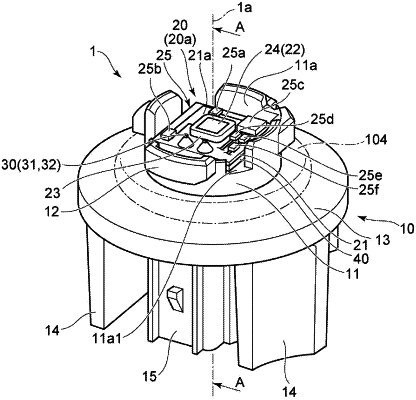| CPC F21S 41/192 (2018.01) [F21S 41/143 (2018.01); H05B 47/105 (2020.01)] | 10 Claims |

|
1. A vehicle lighting device, comprising:
a socket;
a substrate provided on one end side of the socket;
a light-emitting element provided on the substrate;
a control element provided on the substrate and comprising a current driver whose output side is electrically connected to the light-emitting element and a current setting circuit whose output side is electrically connected to the current driver;
a first circuit provided on the substrate, electrically connected to a first input side of the current setting circuit, and whose resistance value changes depending on an ambient temperature of the light-emitting element; and
a second circuit provided on the substrate, electrically connected to a second input side of the current setting circuit, and whose resistance value changes depending on the ambient temperature of the light-emitting element,
wherein the current setting circuit:
in a temperature region where the ambient temperature of the light-emitting element exceeds a first temperature and is equal to or lower than a second temperature higher than the first temperature, decreases an output current flowing to the light-emitting element as the ambient temperature of the light-emitting element rises, based on changes in the resistance value of the first circuit, and
in a temperature region where the ambient temperature of the light-emitting element exceeds the second temperature, increases a ratio of decreasing the output current flowing to the light-emitting element as the ambient temperature of the light-emitting element rises, based on changes in the resistance value of the second circuit.
|